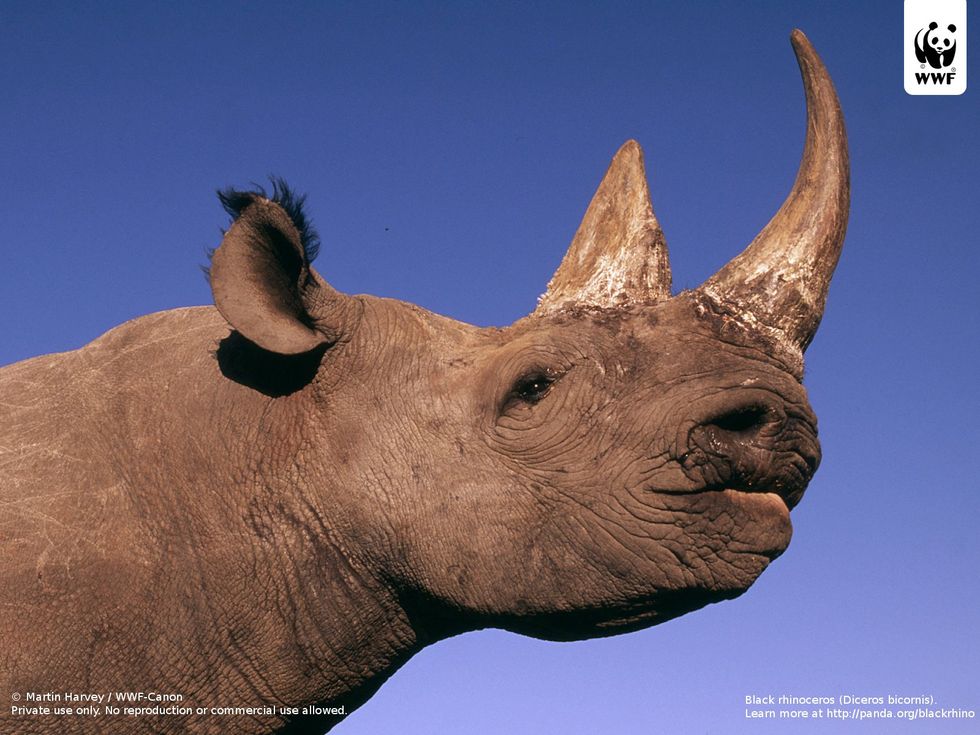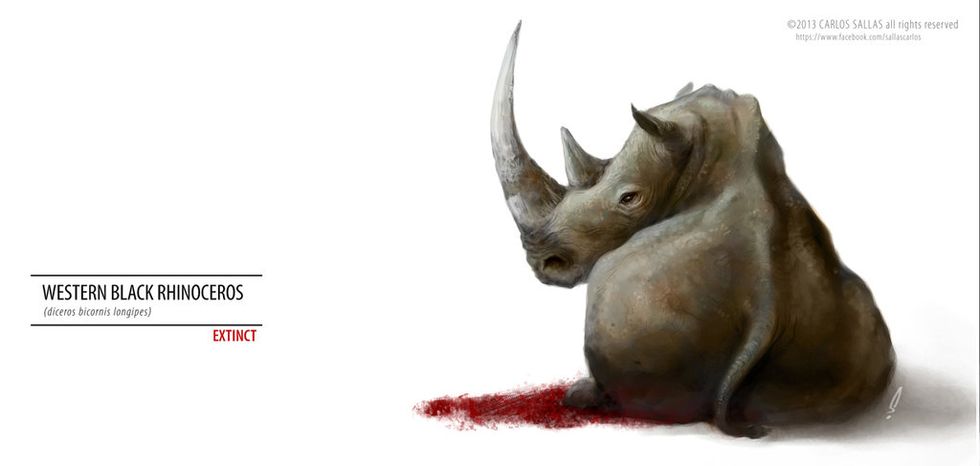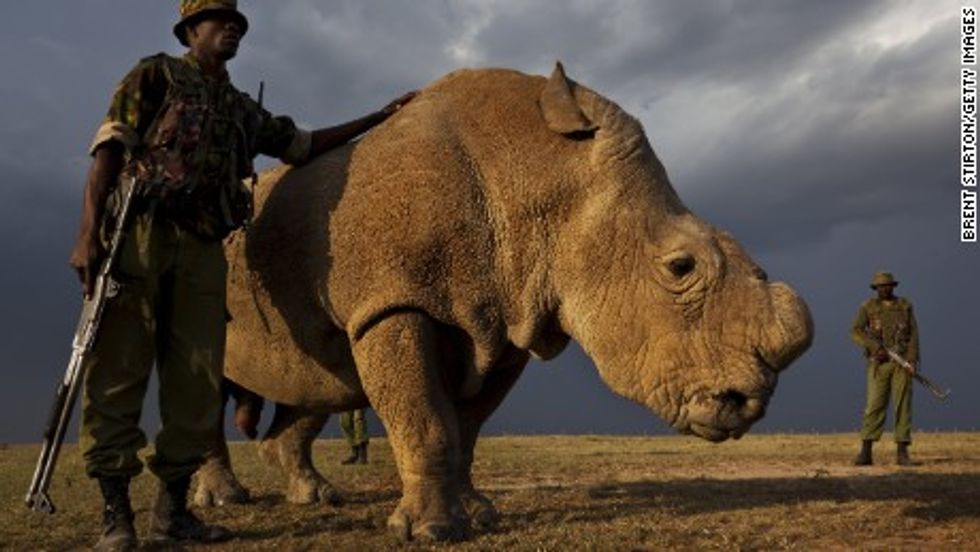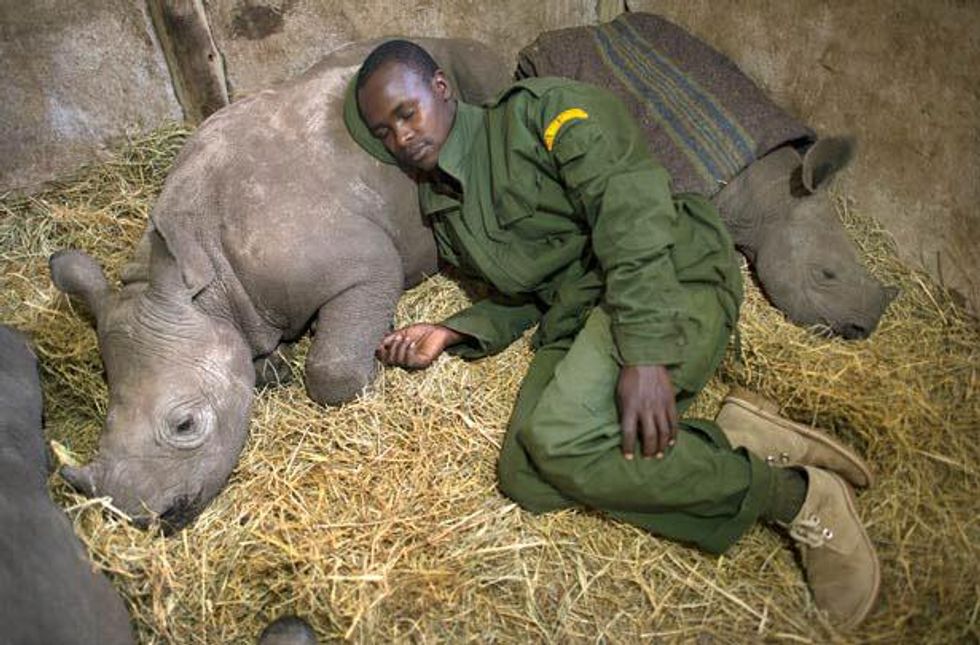Around 2013, the Western black rhinoceros was declared extinct by the International Union for Conservation of Nature (IUCN) due to ivory poaching, and the IUCN is worried that the fate of other rhinos will all soon by following in the black rhino's footsteps towards oblivion. The IUCN warns us, stating that Africa's northern white rhino is "teetering on the brink of extinction," with only one male left worldwide, while Asia's Javan rhino is "making its last stand," as a result of continued poaching and lack of conservation.
While much has been done to help put an end to poaching, like implementing park rangers, it is too often that park rangers find a carcass or mutilated animal with no perpetrator in sight. Rhino horn is made out of the same stuff as human nails, and just like picking off your toenails would be excruciatingly painful, it is also agonizing for a rhino to be dehorned.
Although some rhinos are just left without a horn, most are unnecessarily killed, frequently leaving behind poor motherless baby rhinos.
It is especially difficult for the rangers to do their job in the darkness of night, and that is when many poachers strike. Thankfully, the World Wildlife Fund (WWF) has engineered a remarkable new thermal and infrared camera and software system through a grant from Google.org. The new technology will help identify poachers from afar and alert park rangers of their presence, so that a quick response ranger unit can be deployed to intercept.
This is the first time that infrared cameras and human recognition software have been used to monitor a park’s boundary for conservation and anti-poaching efforts. It is truly inspiring, as perhaps this new technology will finally put an end to ivory poaching once and for all. If the pilot projects prove successful in Kenya, WWF plans to use this technology to stop poachers in more and more locations. To help make a difference today, you can learn more information, donate, and/or 'adopt a rhino' on https://www.worldwildlife.org/




















